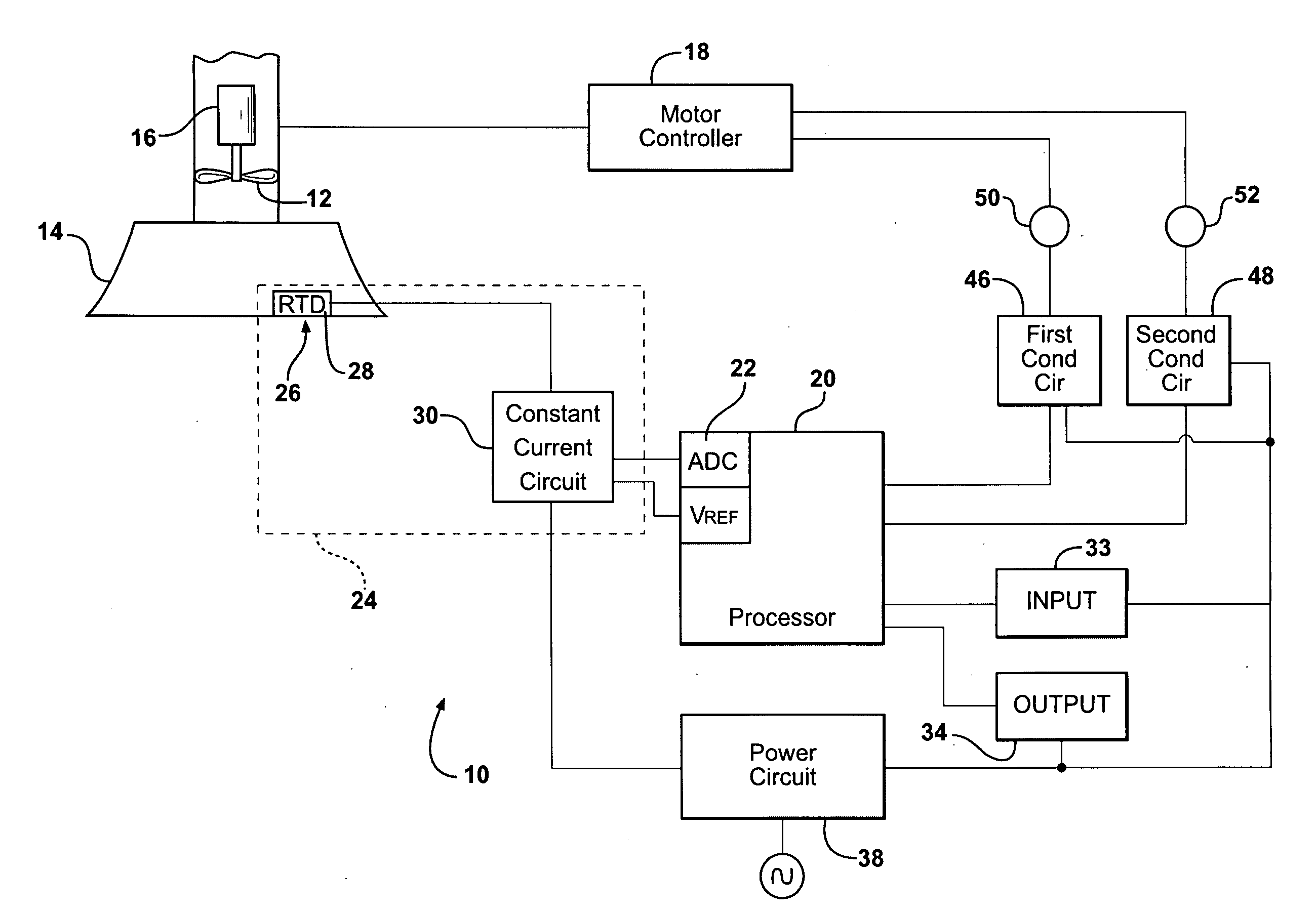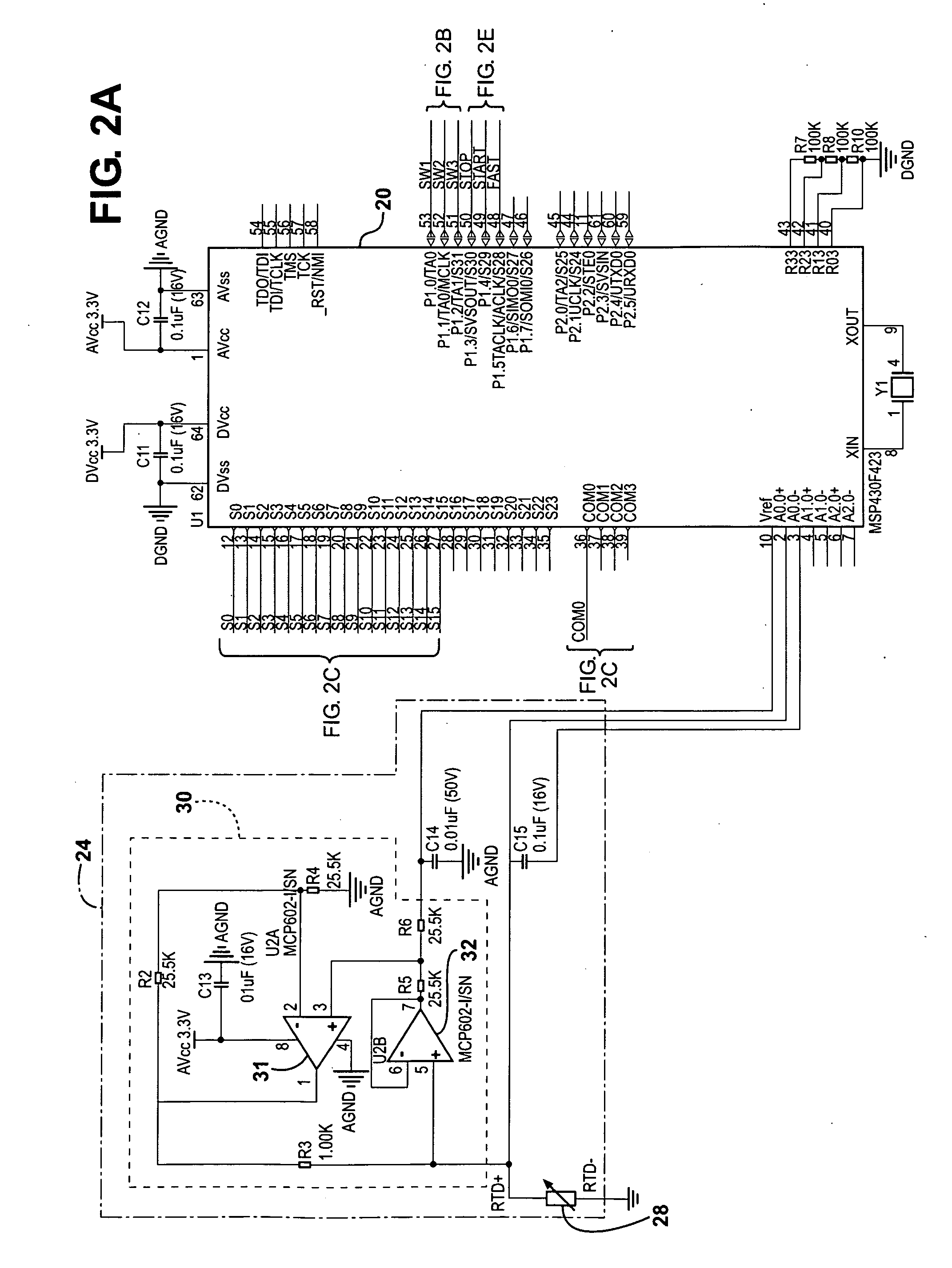Control system and method for controlling an air handling fan for a vent hood
a technology for controlling systems and air handling fans, which is applied in the direction of static/dynamic balance measurement, instruments, stoves or ranges, etc., can solve the problems of wasting energy, unable to turn on the vent hood or increase the speed, and often too busy with other tasks to achieve the effect of preventing chattering and buzzing relays, promoting proper electrical components, and avoiding repetitive, unnecessary and sometimes harmful switching of the speed of the fan
- Summary
- Abstract
- Description
- Claims
- Application Information
AI Technical Summary
Benefits of technology
Problems solved by technology
Method used
Image
Examples
Embodiment Construction
[0017]Referring to the Figures, wherein like numerals indicate corresponding parts throughout the several views, a control system 10 is shown for controlling an air handling fan 12 for a vent hood 14. The vent hood 14 may be positioned in a kitchen, particularly above a cooking surface. An electric motor 16 operatively connected to the fan 12 for turning the fan 12, as is well known to those skilled in the art. The fan 12 generates an airflow to move air though the vent hood 14 and, typically, to exhaust the air to the atmosphere.
[0018]A motor controller 18 is electrically connected to the electric motor 16 for controlling the application of electric current to the electric motor 16. In the preferred embodiment, the motor controller 18 is a variable speed drive capable of operating the motor 16 at a variety of speeds. Consequently, the speed of the fan 12 and the rate of air flow generated by the fan 12, are also variable. More preferably, the motor controller 18 is a variable frequ...
PUM
 Login to View More
Login to View More Abstract
Description
Claims
Application Information
 Login to View More
Login to View More - R&D
- Intellectual Property
- Life Sciences
- Materials
- Tech Scout
- Unparalleled Data Quality
- Higher Quality Content
- 60% Fewer Hallucinations
Browse by: Latest US Patents, China's latest patents, Technical Efficacy Thesaurus, Application Domain, Technology Topic, Popular Technical Reports.
© 2025 PatSnap. All rights reserved.Legal|Privacy policy|Modern Slavery Act Transparency Statement|Sitemap|About US| Contact US: help@patsnap.com



